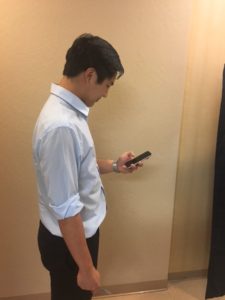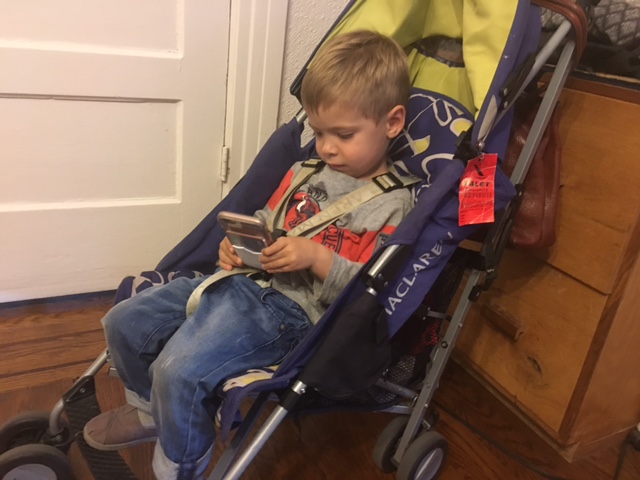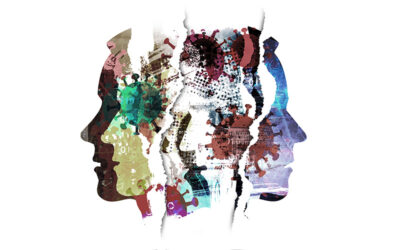“Digital natives” are those young women and men who have been raised from childhood on computers. We see them everywhere: Toddlers in strollers playing with iPhones, pre-teens on iPads in restaurants, strategically distracted to allow their parents to eat in peace; Junior High and High School kids doing schoolwork on laptops in the classroom or at home, sitting or lying in bed.
For the digital native, the computer is an extension of his or her body. By the time they enter pre-school, many can navigate apps. Ten-year olds can program software. Adolescents live their social lives on tiny screens. Most of the digital native’s life runs through this digital medium.
Evolution of posture
As infants, we lay on our stomachs and backs. We begin to crawl. Our heads move up and back against gravity, supported by the strengthening musculature of our necks. We sit up and finally we stand, our eyes oriented to the world in front of us.
We evolved this posture out on the savannas for hunting and gathering. It allowed us to look efficiently for predators and prey, our spines perfectly balanced for strength and stability.
This was forty thousand years ago. And it took us a million years or so to get to that point, co-evolving with our environment.
The post-industrial revolution
We are now in the thick of the post-industrial revolution. And we are seeing our first fully digital generation. The members? Twenty year olds suffering from back pain, headaches and sciatica.
I see their rounded shoulders and heads held forward.  Years of laying in beds and slumped in couches, hunched over laptops have changed them. No longer balanced with eyes forward to scan the vistas, their orientation is downward, heads flexed on their necks and shoulders, pulled into the tiny high-definition monitor screens with which they have become as one.
Years of laying in beds and slumped in couches, hunched over laptops have changed them. No longer balanced with eyes forward to scan the vistas, their orientation is downward, heads flexed on their necks and shoulders, pulled into the tiny high-definition monitor screens with which they have become as one.
The post-industrial sweat shop
I see them as visitors to my office and “in situ” at their work places: beautiful atriums with kitchens and free food. Some even provide beer and wine. There are no time clocks. Just work until your work is done. No two- or three-week vacations. There is unlimited vacation. Take off as much time as you like; as long as your work is done.
Sounds idyllic. Yet in this era of apparent freedom, the work week has gone from 40 to 50 to 60 hours; frequently longer. But few dare complain. This is the new order. There are no unions. Why should there be? Workers are well paid. They design and create in tech, at the cutting edge of the digital revolution. They are surrounded by other young, hip people just like themselves. Great jobs for young people right out of college. Many can even afford to live in San Francisco…albeit with three or four roommates.
They work in lines, monitor next to monitor, five to six stations deep, wearing headphones to block out the open space noise. Surrounded by co-workers, they are alone. Hour after hour, they stare into multiple screens. Some at sit stand desks, others slumping, hour after hour, deepening the spinal “C” curves they have been growing for most of their lives.
five to six stations deep, wearing headphones to block out the open space noise. Surrounded by co-workers, they are alone. Hour after hour, they stare into multiple screens. Some at sit stand desks, others slumping, hour after hour, deepening the spinal “C” curves they have been growing for most of their lives.
They come to me in pain. I loosen their tightened muscles and mobilize their fixated joints. I analyze their workstations, make appropriate adjustments and teach them exercises. I explain to them how their lives and lifestyles have driven them from upright Homo Erectus to what I call Homo Digitalis, “Digital Man”, or more aptly, “Slouching Man”.
Displacement
I can help these young people address the physical causes of their pain. Monitors can be raised, keyboards lowered, chairs adjusted. But there is something else; something more subtle and less mechanical going on. It has something to do with how far we have strayed from that person standing on the broad savannah; from the epoch when we chased animals, ran from them, walked miles each day in search of food, climbed trees, dug for edible roots, sat around a fire, talked and drummed; the millennia when we slept at sundown, awoke at its rise and moved with the seasons.
The pain of the digital native is the pain of displacement. We have become disconnected from our evolutionarily determined ways of being; the furthest we have ever been from our full integration with the natural environment. Until we address this loss, our healing will not be complete.
Copyright 2016 Ricky Fishman
Dr. Ricky Fishman has been a San Francisco based chiropractor since 1986. In addition to the treatment of back pain and other musculoskeletal injuries, he works as a consultant in the field of health and wellness with companies dedicated to re-visioning health care for the 21st century.
ricky@rickyfishman.com www.rickyfishman.com












